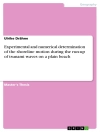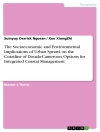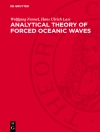This book focuses on issues of method and interpretation in studies of submerged landscapes, concentrating on illustrations and case studies from around Europe with additional examples from other parts of the world. Such landscapes were once exposed as dry land during the low sea levels that prevailed during the glacial periods that occupied most of the past million years and provided extensive new territories for human exploitation. Their study today involves underwater investigation, using techniques and strategies which are clearly set out in these chapters. The underwater landscape provides a rich source of information about the archaeology of human settlement and long-term changes in environment, climate and sea-level. This book highlights how such information can be revealed and interpreted.
The examples presented here and the focus on techniques make this book of worldwide relevance. Chapters describe examples of underwater archaeological investigation as well as collaboration with offshore industries and legal, management and training issues relating to underwater cultural heritage. Such studies point to the significance of this drowned landscape, and readers are invited to consider its human impact in terms of past settlement and population dispersal through palaeolandscape reconstruction and interpretation in relation to broader themes in human prehistory.
This volume is based on work from COST Action SPLASHCOS, a four-year multi-disciplinary and multi-national research program supported by COST (European Cooperation in Science and Technology) and has something to benefit all those with an interest in the sea floor of the continental shelf and the archaeological and social impact of sea-level change, including archaeologists, marine scientists, geographers, cultural-heritage managers, commercial and governmental organisations, policy makers and interested members of the public.
قائمة المحتويات
Preface.- 1. Archaeology and palaeolandscapes of the continental shelf: an introduction.- Part I. Techniques and Strategies .- 2. Survey strategies and techniques in underwater geoarchaeological research: an overview with emphasis on prehistoric sites.- 3. Relative sea-level rise, palaeotopograpy and transgression velocity on the continental shelf.- 4 Joint explorations of the sunken past: examples of maritime archaeological collaboration between industry and academia in the Baltic.- 5. The late Mesolithic site of Falden, Denmark: results from underwater archaeological fieldwork and a strategy for capacity-building based on the SPLASHCOS mission.- 6. Atlit-Yam: A Unique 9000 year old prehistoric village submerged off the Carmel coast, Israel – the SPLASHCOS Field School (2011).- Part II. Underwater Archaeological Sites .- 7. Submerged Pottery Neolithic settlements off the Mediterranean coast of Israel: subsistence, material culture and the development of burial grounds.-8. Hjarnø Sund: an eroding Mesolithic site and the tale of two paddles.- 9. Fished up from the Baltic Sea – a new Ertebølle site near Stohl Cliff, Kiel Bay, Germany.- 10. Investigations of submerged palaeoshorelines in the Kiel Fjord.- 11. Submerged settlement in the Öresund, western Scania, southernmost Sweden.- Part III. Underwater Landscapes and Archaeology .- 12. Prospecting for Holocene palaeolandscapes in the Sound of Harris, Outer Hebrides.- 13. Early Holocene landscape development and Baltic Sea history based on high-resolution bathymetry and lagoonal sediments in the Hanö Bay, southern Sweden.- 14. Tributaries of the Elbe palaeovalley: features of a hidden palaeolandscape in the German Bight, North Sea.- 15. The Wadden Sea of North-West Germany: an intertidal environment of high archaeological research potential.- 16. Sacred landscapes and changing sea levels: new interdisciplinary data from the Early Neolithic to the Present in south-eastern Sicily.- 17. Archaeologicalpotential of the anchialine caves in Croatia.- Part IV. Landscapes of the Continental Shelf and Human Dispersals .- 18. The role of submerged landscapes in ground-truthing models of human dispersal during the last half million years.- 19. The northern coasts of Doggerland and the colonisation of Norway at the end of the Ice Age.- 20. Doggerland and the Lost Frontiers Project (2015–2020).- 21. Postglacial human dispersal and submerged landscapes in north-west Europe.- 22. Aegean Pleistocene landscapes above and below sea level: palaeogeographic reconstruction and hominin dispersals.- 23. Africa-Arabia connections and geoarchaeological exploration in the southern Red Sea: preliminary results and wider significance.- 24. To the Islands: the archaeology of the archipelagos of NW Australia and its implications for drowned cultural landscapes.- Part V. Outreach and Management .- 25. Education and engagement: developing understanding and appreciation of submerged prehistoric landscapes.- 26. Arch-Manche: using archaeological, palaeoenvironmental, historical and artistic resources in coastal management.- 27. The Se Arch Project: towards an assessment methodology and sustainable management policy for the archaeological heritage of the North Sea in Belgium.- 28. The history of industry-linked research in English waters: lessons for the future.












